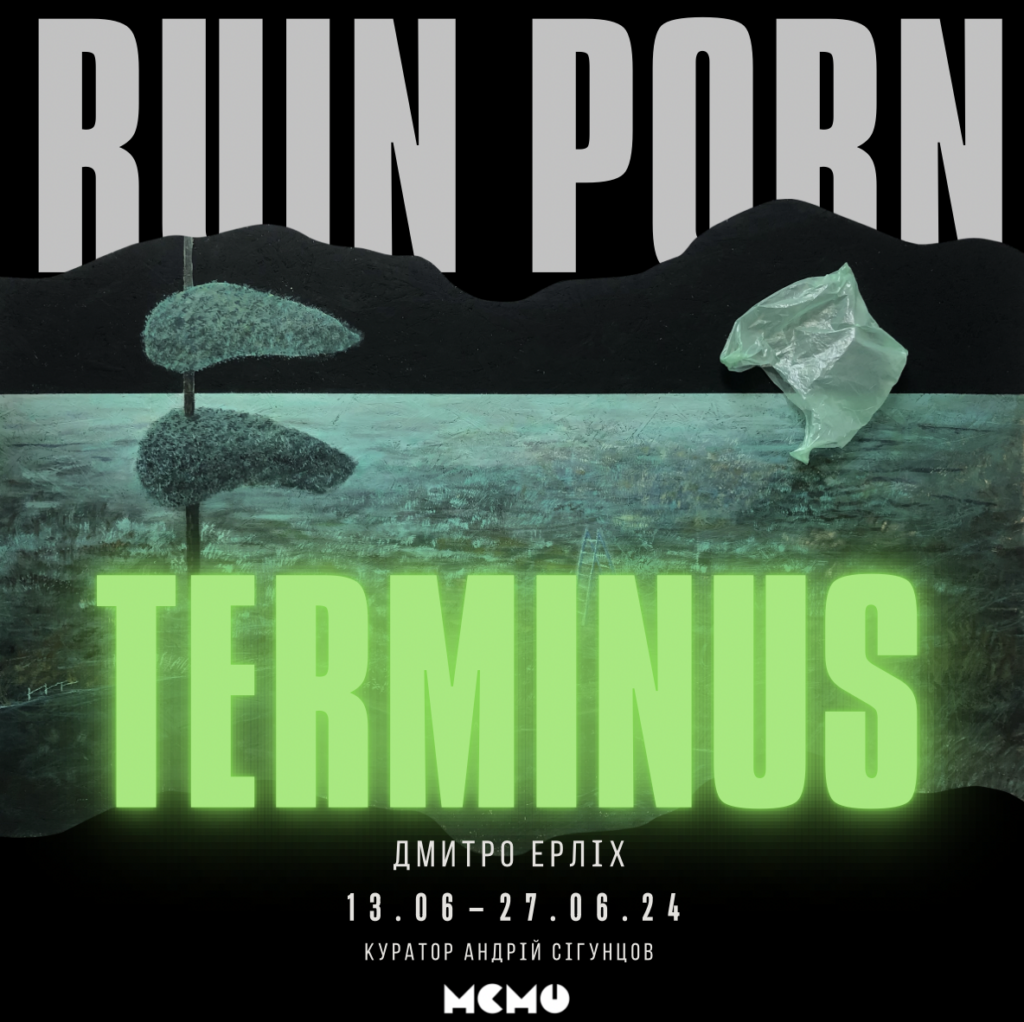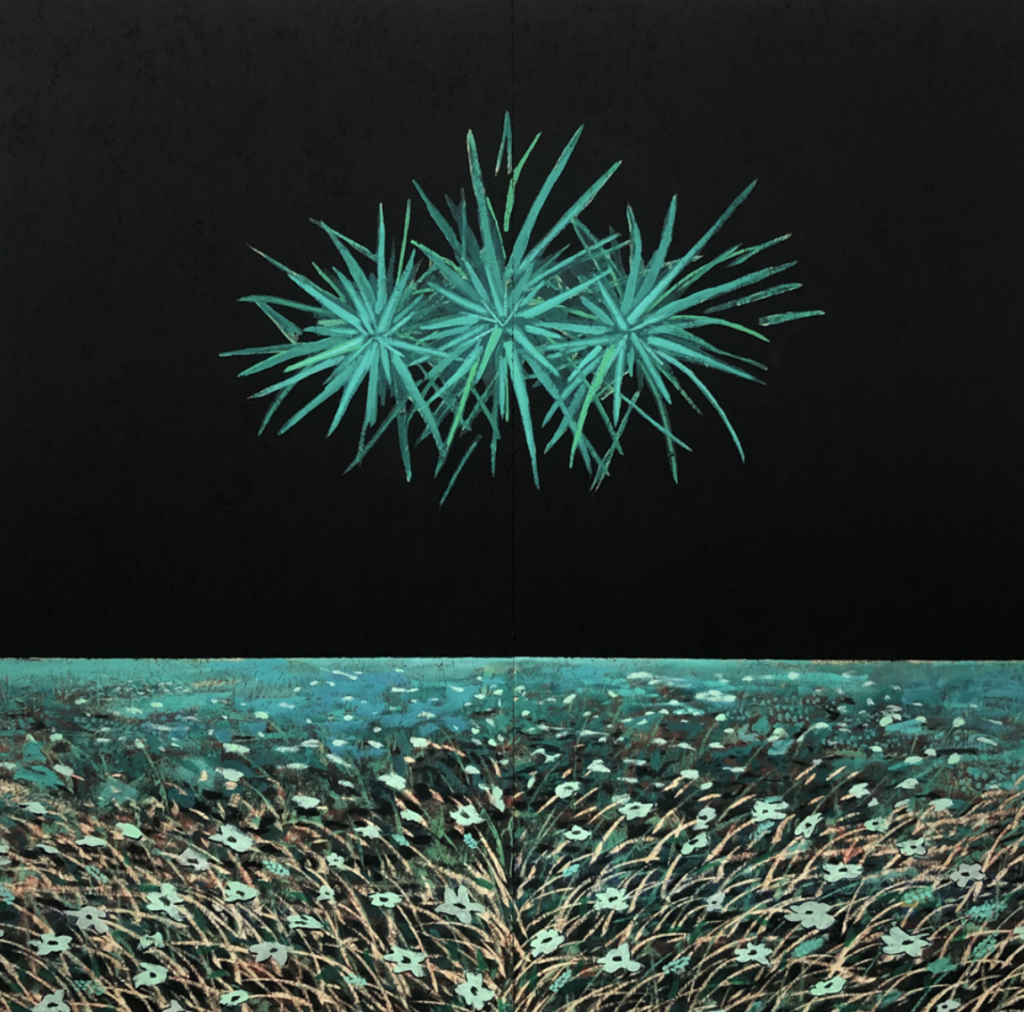Ruin porn: Terminus
10.06.2024 2024-06-26 13:17Ruin porn: Terminus
Let’s imagine the future. Somewhere in the world there is a game. Organized by the consent of many countries by a certain Master, a powerful and mysterious figure. This game combines the rules of racing, similar to the Paris-Dakar rally, and the rules of American football, where the main thing is to prevent the opponent from moving forward.
You might think this is a description of current events, but it’s not. This is an excerpt from the description of the 1987 science fiction film The Final Stop by French director Pierre-William Glenn, which I decided to watch before I started writing this text for a new project by Dmytro Ehrlich, which I also decided to call Terminus. My collaboration with Ehrlich began at the Museum of Contemporary Art in Odesa four years ago. It coincided with the COVID-19 epidemic, and then the world seemed to be stopped, but it has already become obvious that it was only a pause before new challenges. A lot has changed in these four years, but certain things have remained the same: Dmytro remains an artist, and I remain a curator. This is our second joint project, which, although it has certain recognizable features and uses OSB material, will also take place in Odesa, but will have a completely different content and expression than the previous funny “Bored and Horny”. The theme of compensating for life’s limitations in warm interpersonal relationships will be replaced by the cold shower of reality and the pleasure of watching your own death.

The romantic tradition of “contemplation of ruins” is a metaphor for reflection that reflects the very process of cultural formation. This fascination with post-industrial grandeur generates fantasies that are not aimed at establishing one’s own culture, but rather at moving away from the post-socialist or post-industrial “Other.” The term “ruin porn,” coined by the writer and photographer James D. Griffin, originally described the tendency of visiting tourists to take pictures of Detroit. They were overly focused on the ruins of the city, ignoring the problems of its inhabitants, including Griffin himself. Originally coined to describe Detroit, the term is used to describe a large number of archives of (post)apocalyptic abandonment that are widely represented in photostocks around the world. A special interest in “ruin porn” can be observed in Eastern Europe, in particular, in the popularity of the Chornobyl exclusion zone and in Ukraine in general. This interaction involves a hierarchical relationship, where the photographer’s exploitative gaze satisfies the voyeuristic desires of viewers removed from the context of the places depicted. In an article published in the Calvert Journal in 2014, Jamie Rahn highlighted the ethical problems of the post-socialist fetish: “Such works have been rightly criticized for diminishing, aestheticizing, and dehumanizing the city by depicting architectural form as naked and devoid of humanity, much as pornography objectifies the body.”
This aesthetic can also be seen in Ehrlich’s project, but unlike photographers who capture the apocalyptic world for the pleasure of others, Dmytro uses certain architectural elements and photographic techniques to create artworks and deprives the place of human presence to satisfy his own desire. His quiet and trusting tone, his ability to see drama in simple circumstances, and his calm, even somewhat detached tone of narration convey the artist’s inner dissatisfaction with the fate that has been prepared for society in advance.
The pornography of ruins becomes a new means of aestheticizing destroyed landscapes. It is porn because it touches on the immoral, representing an uncontrollable libidinal reaction that overpowers the rational fear of death. We have to recognize this visionary orientation – a vision of the coming collapse of humanity. The reason it is arousing is that it offers an image of our own death while we are still alive. It suggests that there is not really historical time, but only geological time. And that a nuclear explosion or the subsequent extinction of humanity will not be the end of the Earth. It is only the evolutionary end of a certain species. We are already witnessing the closure of the space of variations in politics and personal experience by capital, nation, and state. By erasing all traces of human presence, the artist represents nostalgia for a lost future, offers an apolitical awareness of the historical conditions of our racial and colonial present, and asks the question: “Who owns death?”


INFORMATION ABOUT THE EXHIBITION AND CONTACTS:
The exhibition’s vernissage will take place on June 13, 2024 at 16:00 at the new address of the MoOMA exhibition activities – Pushkinskaya 19.
Opening hours:
Monday – Sunday from 14:00 to 20:00
Wednesday is a day off.
Author of the exhibition: Dmytro Ehrlich
Co-author of the installation: Ilya Petrov
Project curator: Andriy Siguntsov
